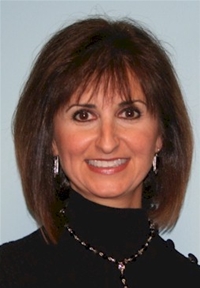
Sarah Wallace
Speech-Language Pathology
Duquesne University
wallaces@duq.edu

|
Sarah Wallace Speech-Language Pathology Duquesne University wallaces@duq.edu |

|
Annette Neff Speech-Language Pathology Duquesne University baftneffa@duq.edu |

|
Caterina Staltari Speech-Language Pathology Duquesne University staltari@duq.edu |
| Participants: | varies by group |
| Type of Study: | Aphasia group sessions |
| Location: | USA |
| Media type: | video |
| DOI: | doi:10.21415/T50Q3F |
In accordance with TalkBank rules, any use of data from this corpus must be
accompanied by at least one corpus reference. If none is given, please use the
primary AphasiaBank reference:
MacWhinney, B., Fromm, D., Forbes, M. & Holland, A. (2011). AphasiaBank:
Methods for studying discourse. Aphasiology, 25,1286-1307.
Established in 1998, the Speech-Language-Hearing Clinic at Duquesne University serves people of all ages who have problems communicating. One of six specialty clinics within the department, the Adult Language and Cognition Clinic offers diagnostic services, and individual and group therapy to adults with a range of disabilities.
The media files are organized in 3 folders: Tuesday (mild aphasia group), Friday AM (moderate aphasia group), and Friday PM (severe aphasia group). Within each folder, most are named by recording date (yymmdd.mp4) but some are named by year and semester. Note: The ones labeled by year and semester are also numbered but those numbers do not necessarily chronological order.
Thematic Aphasia Groups
Our two thematic aphasia groups use varied treatment models across a single semester. Approaches include Contextual Group Communication Treatment (Garrett, Staltari, & Moir, 2007) and Semantic Feature Analysis Treatment (Antonucci, 2009; Falconer & Antonucci, 2012). Regardless of the approach, the group structure typically includes four to six clients with a student clinician facilitating communication with each client as well as a student clinician leading the session. Group sessions begin with opening conversation during which all clients have the opportunity to offer comments and questions following prompts from the lead clinician. Once the topic of conversation is exhausted, a second lead clinician then introduces main topic for the session using a variety of cues such as scaffolded questions, pictures, text, or objects to augment input. Depending on the approach used, clients either break from the group setting for direct individual treatment with their clinician to practice using specific vocabulary or work with their clinician within the group context to support communication. The goal for all group sessions is to support functional communication at the level of discourse. Some sessions include two videos from a single meeting that show perspective from different angles in the room.
Mild Discourse Group
Our two thematic aphasia groups use varied treatment models across a single semester. Approaches include Contextual Group Communication Treatment (Garrett, Staltari, & Moir, 2007) and Semantic Feature Analysis Treatment (Antonucci, 2009; Falconer & Antonucci, 2012). Regardless of the approach, the group structure typically includes four to six clients with a student clinician facilitating communication with each client as well as a student clinician leading the session. Group sessions begin with opening conversation during which all clients have the opportunity to offer comments and questions following prompts from the lead clinician. Once the topic of conversation is exhausted, a second lead clinician then introduces main topic for the session using a variety of cues such as scaffolded questions, pictures, text, or objects to augment input. Depending on the approach used, clients either break from the group setting for direct individual treatment with their clinician to practice using specific vocabulary or work with their clinician within the group context to support communication. The goal for all group sessions is to support functional communication at the level of discourse. Some sessions include two videos from a single meeting that show perspective from different angles in the room.
General Group Information
The mild discourse group has individuals with mild aphasia while the thematic groups have people with moderate to severe aphasia. Both groups include people with other speech impairments such as apraxia of speech and dysarthria.
Student clinicians meet with the clinical instructor prior to the group session. During group meetings the session theme is discussed and a lesson plan is developed. The lead clinician typically will meet with the clinical instructor prior to the group meeting to initiate the development of the lesson plan (determining a session theme). The lesson plan is finalized within the group meeting and the lead clinician will type and print the lesson plan and distribute to each clinician. Certified speech-language pathologists supervise student clinicians.
References
Antonucci, S. (2009). Use of semantic feature analysis in group aphasia treatment. Aphasiology, 23, 854–866.
Bernstein-Ellis, E., & Elman, R. (2007). Aphasia Communication Group Treatment: The Aphasia Center of California Approach. In R. Elman (Ed.). Group treatment for neurogenic communication disorders: The expert clinician's approach. (2nd ed.) San Diego, CA: Plural Publishing.
Falconer, C., & Antonucci, S. M. (2012). Use of semantic feature analysis in group discourse treatment for aphasia: Extension and expansion. Aphasiology, 26, 64-82.
Garrett, K. Staltari, C., & Moir, L. (2007) Contextual Group Communication Therapy for persons with Aphasia: A Scaffolded Discourse Approach. In R. Elman (Ed.). Group treatment for neurogenic communication disorders: The expert clinician's approach. (2nd ed.). San Diego, CA: Plural Publishing.
Holland, A., & Beeson, P. (1999). Aphasia Groups: The Arizona Experience. In R. Elman (Ed.). Group treatment for neurogenic communication disorders: The expert clinician's approach. (2nd ed.). San Diego, CA: Plural Publishing.
Marshall, R. C. (1993). Problem-focused group treatment for clients with mild aphasia. American Journal of Speech-Language Pathology, 2, 31-37.
Penman, T. & Pound, C. (2007). Making Connections: Involving People with Aphasia as Group Facilitators. In R. Elman (Ed.). Group treatment for neurogenic communication disorders: The expert clinician's approach. (2nd Ed.) (pp. 233-247). San Diego, CA: Plural Publishing.
Note: These videos were transcribed using ASR but have not been reviewed for accuracy.